Molyworks is one of my favorite 3D printing startups. The company has huge potential with its containerized atomization machine, which convert scrap metal into 3D printing powder. This was underscored by their winning of the AM Ventures Impact Award at Formnext this year.
No other current startup has the potential to have so much impact on 3D printing as Molyworks can have. By making metal powder cheaper and more local, the firm can fundamentally change the economics of metal printing. By making powder more recyclable and by recycling 3D printing support structures and mis-built parts into new powder, it can also aid in improving the economics and sustainability of the technology in that sense.
Think of what a working Molyworks installation could mean for a car manufacturer—how kaizen is that? What could it also mean in getting the shipbuilding, marine, and oil and gas companies on board? The ability to make their own powder could also make isolated countries and areas fruitful sources of spare parts for oil and gas or other high tech installations. Imagine if a country like Nigeria could play a huge part in the 3D printing revolution by completely printing a large part of its oil and gas infrastructure through locally sourced powder.
But, most of all just imaging just how much the U.S. military is salivating to be able to cost-effectively use scrap to print all manner of things in-country. You might imagine militaries as UPS with guns—up to six soldiers working to supply one person in the field. Getting a kilo of goods to a forward operating area is expensive and, once there, waste is a huge issue. Being able to therefore turn scrap into spare parts or consumables would give a modern military a huge advantage in cost and flexibility.
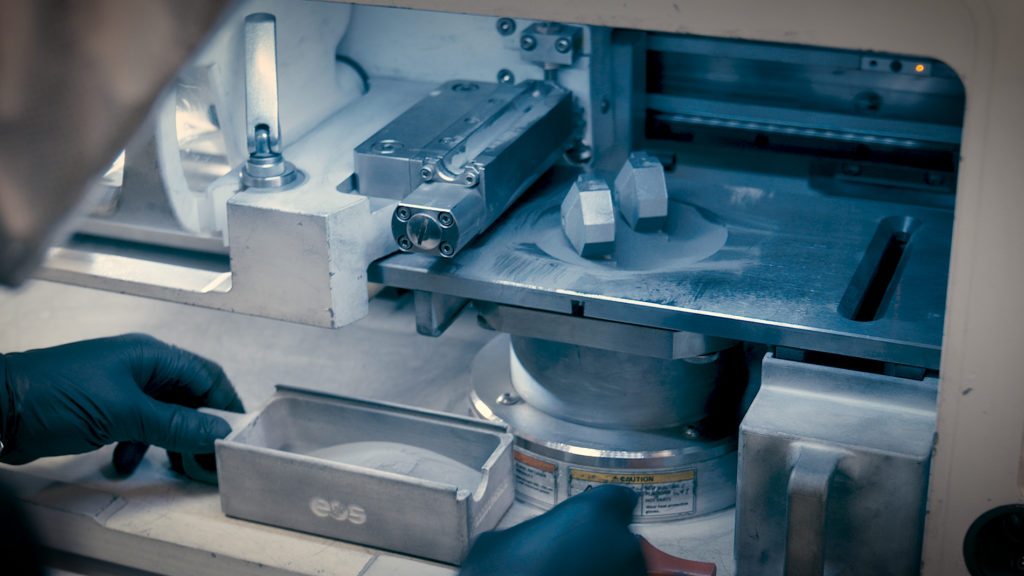
The company’s in-house M290 building parts made from scrap.
I interviewed Molyworks co-founder and Executive Vice President Chris Eonta to find out more. The company is currently doing the second stage of a large pilot project to remotely make powder from scrap. The on-site system, named Greyhound, is also being used by the team to make powder on demand. Over the course of the next 12 months, they hope to install more systems on sites worldwide. The U.S.-based startup also sports a Singapore location, helping the city-state stay on the cutting edge of marine technology.
Eonta says that countries that are interested in the Greyhound, “have no local metal powder production, have to import wire or ingots, and have problems getting powder in and out of the country, especially problems with long lead times.” With regards to performance of Molyworks powder when compared to gas atomized powder, he states, “We are all in the same ballpark in making spherical particles that flow; us, gas and plasma atomization.” The Molyworks set up is smaller, lower in cost and also more flexible however. “With us, it’s easier to customize powders, and enable more tuning of a powder, but overall there aren’t many differences.”
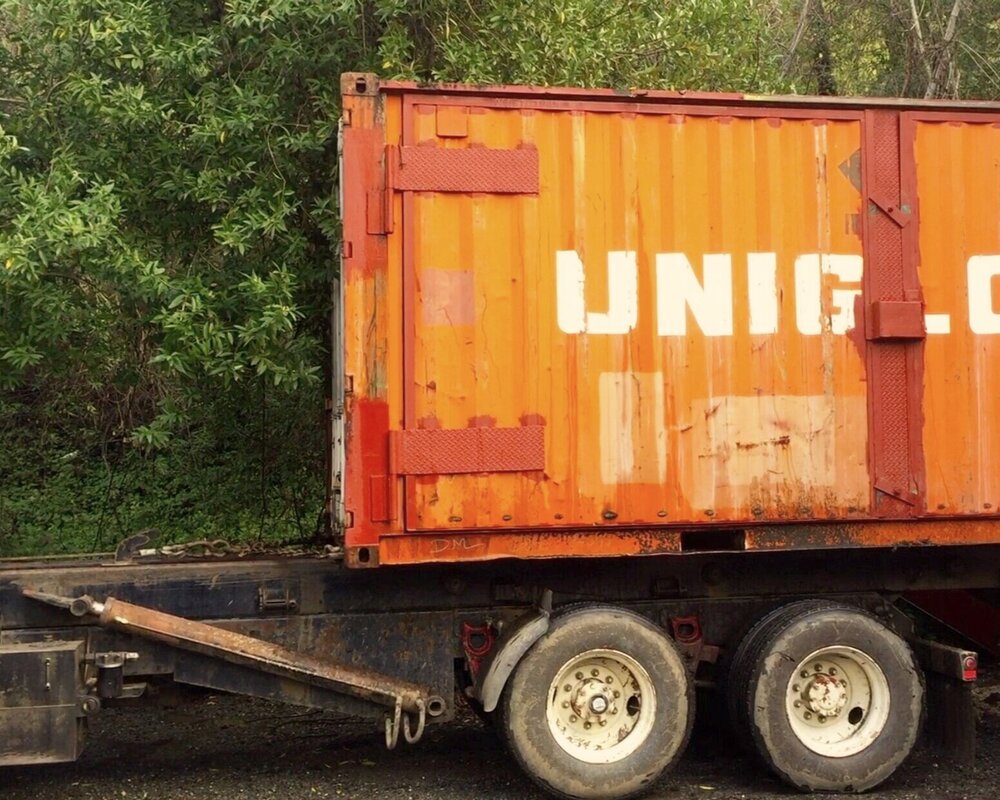
What is different is the fact that the entire Molyworks setup is container-izable. This is not because the firm set out to make a container-based powder atomization solution. Rather the team needed a place to build their system and chose a shipping container on the lawn of one of the founders to do so. Later on, when the U.S. military was seeing containerized gas atomization solutions and recycling units for metal, Molyworks had just happened to have already built one.
“Initially, it was myself and [Matthew Charles] and [Andrew LaTour]. I bought a vacuum induction furnace from eBay that we were trying to get to work. We flipped it over and dropped in a plasma torch and installed it in a shipping container on Matt’s front lawn,” Eonta said.
The system complements a Jeep collection that is going through ceaseless revisions and two other shipping containers.
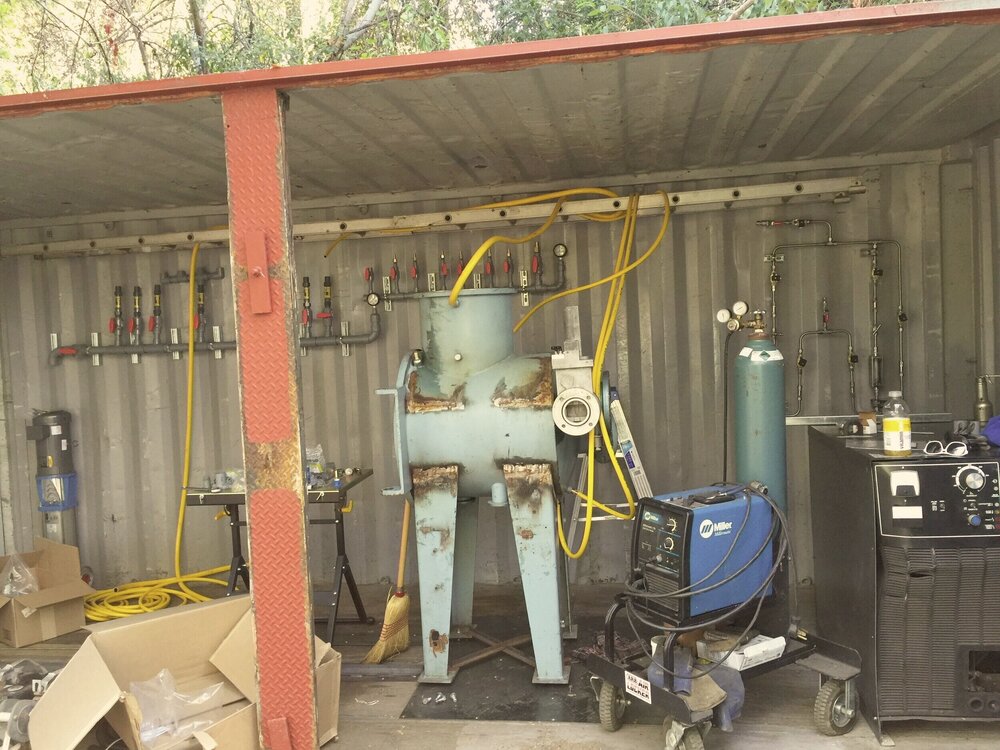
One could only imagine the somewhat resigned acquiescence of Matthew Charles’s wife and the lack of any meddlesome neighbors as the team worked on building Greyhound there for six months. Some neighbors imagined that the group had a meth lab, while others thought that the furnace plasma torch combo was a meat smoker. The team was ordering so many parts online, particularly on eBay, that they took each Friday morning to spend on just breaking down boxes.
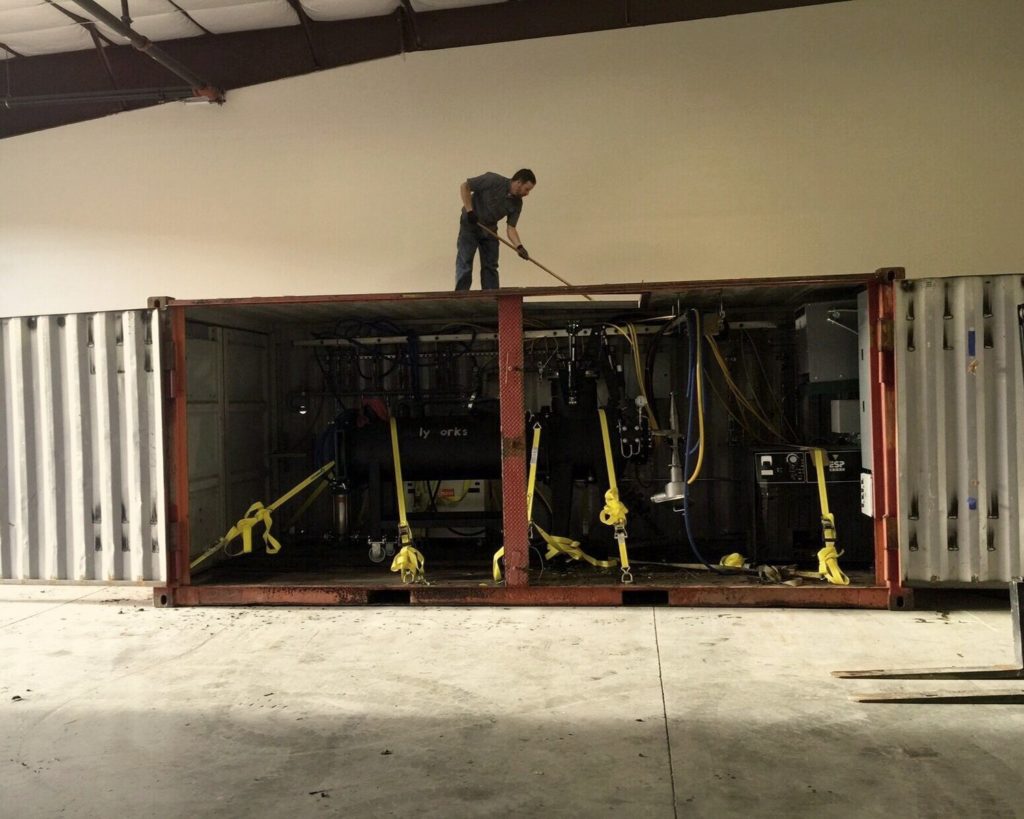
By picking up dented power supplies from eBay and many other second-hand parts, the team was able to survive for years on their own money and that of an angel investor. They also attacked the atomization problem through engineering, experimentation and hardware hacking, discovering many design principles through iterations of their atomizer. By November 2015, they were able to place the entire working system in a shipping container and transport it. In 2016, the U.S. Army turned out to be looking for just such a solution. This led to the first of now several grants and contracts with the U.S. Military. Now, the firm has 14 U.S. government contracts and is on an award-winning streak with 17 employees.
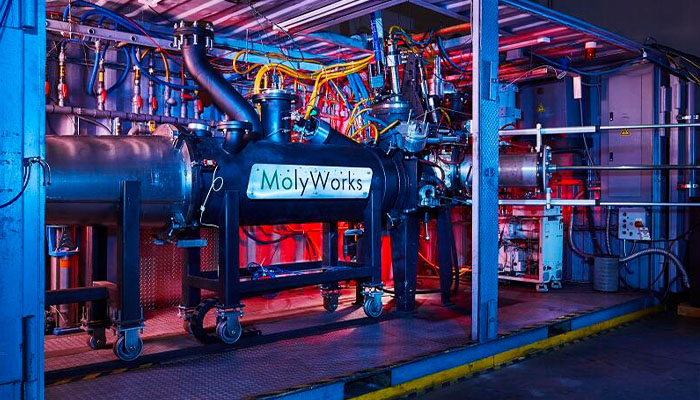
At the moment, they do Digital Demo Days and you can send different scrap to the team to get it recycled to verify their capabilities. Besides winning more government contracts, the firm is looking to bring atomized powder production and metal recycling to countries, regions, and large firms. With one cornerstone customer in place, they can deploy Greyhound to a location such as Singapore. This scalable system can then grow along with that region or country’s needs.
“It will take in scrap from the region. This is very valuable in areas without metal production, where they do have printers, and, on top of that, a lot of manufacturing. It really makes a not of economic sense when we are where the scrap metal is,” Eonta said. “You can start with scrap and get high quality output, and, since its your scrap, you know where it came from—which machine turnings, rod ends, metal frames or tools come from which material, for example.”
There is an element of training needed and Molyworks has to work with customers to ensure that specific materials are separated and categorized properly. For now, next to the demo projects that they do, the team also performs recycling as a service at market rate prices, with a goal of developing users and conducting pilot programs. So far, the company has a pipeline of pilot programs and customers for this service. Eonta admits that they’re a young company and that the business model is still very much in development also. The team also sells tie clips from recycled materials on eBay and Amazon.

Eonta seems sincere about the environmental benefits, as well, warning us: “Just making money is a hollow life. Accelerating the adoption of metal recycling gives real meaning. Choosing recycling, we can make money and do what is good for the environment.” They’re even looking at battery and solar panel combinations that could make it possible to run the system completely on renewables.
In looking to the future, Eonta sees more materials enter the fray: “Now, we focus on titanium. You can find it anywhere; it doesn’t corrode. It is really one of the most sustainable materials.” They’re also able to do Inconels, aluminum, coppers, and steels and are excited about “magnetic materials, NASA-specific refractories, shape memory materials,” but most of all “changing the way the world uses and reuses metal.”
Subscribe to Our Email Newsletter
Stay up-to-date on all the latest news from the 3D printing industry and receive information and offers from third party vendors.
You May Also Like
Gorilla Sports GE’s First 3D Printed Titanium Cast
How do you help a gorilla with a broken arm? Sounds like the start of a bad joke a zookeeper might tell, but it’s an actual dilemma recently faced by...
Nylon 3D Printed Parts Made More Functional with Coatings & Colors
Parts 3D printed from polyamide (PA, Nylon) 12 using powder bed fusion (PBF) are a mainstay in the additive manufacturing (AM) industry. While post-finishing processes have improved the porosity of...
$25M to Back Sintavia’s Largest Expansion of Metal 3D Printing Capacity Since 2019
Sintavia, the digital manufacturing company specializing in mission-critical parts for strategic sectors, announced a $25 million investment to increase its production capacity, the largest expansion to its operations since 2019....
Velo3D Initiates Public Offering in a Bid to Strengthen Financial Foundations and Drive Future Growth
Velo3D (NYSE: VLD) has been among a number of publicly traded 3D printing firms that have attempted to weather the current macroeconomic climate. After posting a challenging financial report for 2023,...































